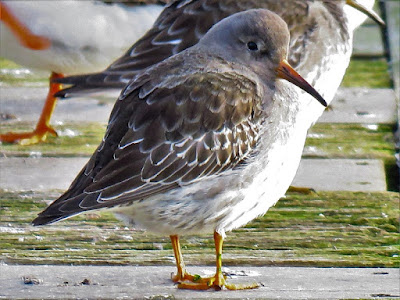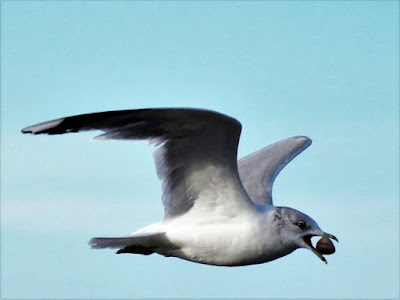On the left a Little Egret with a black bill and yellow feet. On the right a (Great) White Egret with a yellow bill and black feet.
Lapwings are a jumpy species and often all take to the air for no obvious reason. Eight returning.
A Common Snipe giving good views.
Again
And again.
There were two standing in formation.
"Don't look at me like that"
Looks as if it blowing an alpenhorn.
This was a real surprise find. It is a first-winter Green Sandpiper - an adult would show a darker back and therefore more contrast between the white belly. This species is normally a passage migrant though a few stay over winter mainly in small ditches.
There is a woodland hide where tits can be seen. A perky Blue Tit.
Always a treat to see Long-tailed Tits looking this way...
..and that.
Better have another."
(Ed Wilson)























































